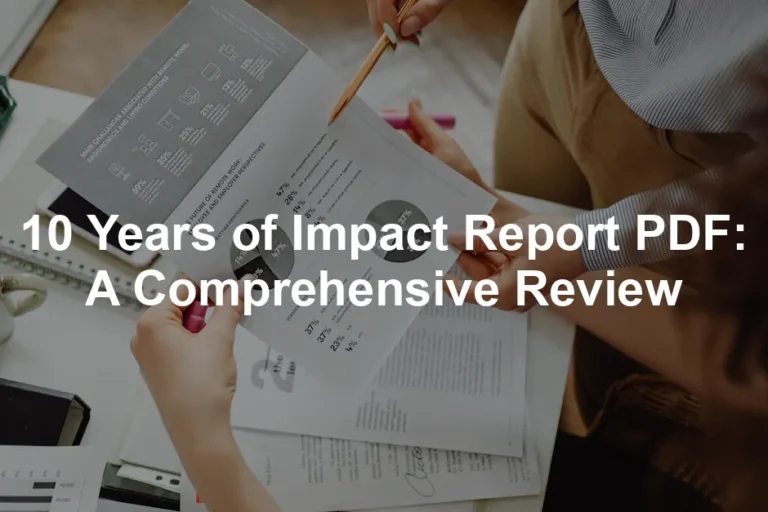Introduction
Understanding crime statistics in Albany, NY, is crucial for residents, potential movers, and visitors. With a city-wide crime rate of 46 per 1,000 residents, Albany stands out as one of the higher-risk areas for crime in the United States. This statistic might raise eyebrows, but it’s essential for making informed decisions about living and working in the area.
Crime rates influence daily life significantly. They can affect where you choose to rent, which neighborhoods to frequent, and even your level of comfort while walking down the street. Knowing the risks can lead to better choices and increased community engagement.
This article breaks down crime statistics in Albany comprehensively. First, we’ll explore the current crime rate and what it means for residents. Next, we’ll delve into historical trends to see how things have changed over the years. Following that, we will compare Albany’s crime statistics with state and national averages. Finally, we will look at community insights and how these statistics can shape local safety measures.
Stay tuned as we navigate the numbers, trends, and stories behind crime in Albany, NY!

Understanding Crime in Albany, NY
Overview of Crime Statistics
Crime can be categorized into two main types: violent crimes and property crimes. Violent crimes include serious offenses like murder, rape, robbery, and assault. Property crimes, on the other hand, encompass burglary, larceny, and motor vehicle theft.
Currently, Albany’s overall crime rate stands at 46 per 1,000 residents. This means there’s a notable chance of becoming a victim of either type of crime. In fact, residents face a 1 in 22 chance of experiencing a crime within the city. This statistic is alarming compared to over 99% of communities in New York that report lower crime rates.
Speaking of crime and its implications, understanding the psychology behind criminal conduct can be quite enlightening. Dive into The Psychology of Criminal Conduct by D.A. Andrews. It offers insights into the behaviors that lead to crime, potentially helping communities devise better prevention strategies.
Historical Context
When examining crime trends in Albany, it’s evident that the landscape has changed over the years. Historical data reveals fluctuations in crime rates from 1996 to the present. For instance, while there have been periods of decline, recent years have shown an unsettling increase in crime rates.
In the past few years, the city has seen significant changes. For example, total crime has surged by 31.3%, while property crime alone increased by 40%. This upward trend highlights the ongoing challenges Albany faces in ensuring community safety.
To grasp the full picture of crime and its historical context, you might find it useful to explore Crime: A Very Short Introduction by Tim Newburn. This book can help you understand how crime evolves over time and the societal factors that contribute to it.
Understanding these trends is vital for residents to grasp what may lie ahead. It’s not just about the numbers. It’s about the stories behind each statistic and how they affect the lives of those in Albany.
As we continue to dissect the crime statistics in Albany, keep in mind the importance of community involvement and awareness in combating crime.

Detailed Crime Statistics
Violent Crime Statistics
Albany, NY, has a notable violent crime rate of 9.18 per 1,000 residents. This statistic raises eyebrows, as it translates to a 1 in 109 chance of becoming a victim of a violent crime. Let’s break down the violent crimes reported in the city:
- Murder: In 2022, Albany recorded 11 murders, yielding a rate of 0.11 per 1,000 residents.
- Rape: The city reported 68 incidents of rape, with a rate of 0.67.
- Robbery: Albany saw 232 robberies, resulting in a rate of 2.30.
- Assault: The most frequent violent crime was assault, with 615 incidents, contributing to a rate of 6.10.
When we compare Albany’s violent crime statistics to state and national averages, the numbers tell a compelling story. New York State’s average violent crime rate is only 4.29 per 1,000 residents, while the national median stands at 4.0 per 1,000 residents. This means Albany’s rate is significantly higher, standing out as a city with elevated risks.
To better understand the psychological aspects of violence, consider reading The Gift of Fear by Gavin de Becker. This book provides essential insights on how to recognize and respond to potentially dangerous situations.
To put it into perspective, Albany’s murder rate is comparable to the state average of 11.2, but lower than many other metropolitan areas. However, when you consider the robbery and assault rates, Albany’s statistics are far above the state and national averages, indicating a pressing issue that needs community attention and response.
Property Crime Statistics
Shifting gears to property crime, Albany’s overall property crime rate is staggering at 37.08 per 1,000 residents. This statistic means that the chances of becoming a victim of property crime are about 1 in 27. Let’s break down the property crimes reported:
- Burglary: Albany reported 531 burglaries, resulting in a rate of 5.27 per 1,000 residents.
- Larceny: A staggering 2,651 incidents of larceny were recorded, translating to an impressive rate of 26.29.
- Motor Vehicle Theft: The city had 557 motor vehicle thefts, which gives a rate of 5.52.
When looking at how Albany’s property crime statistics compare to state and national averages, the disparity is evident. New York State’s average property crime rate is 17.22 per 1,000 residents, while the national average stands at 20.0. Albany’s property crime rate is nearly twice that of the state average, making it a significant area of concern.
To enhance your home security, consider investing in a reliable Home Security Camera System. This can help you keep an eye on your property and deter potential criminals.
The breakdown of property crimes shows that larceny is the most common offense. This could indicate underlying socioeconomic issues, including poverty and lack of opportunity. The high rates of burglary and motor vehicle theft further highlight the need for enhanced community safety measures and preventative strategies.
In summary, Albany’s crime statistics, both violent and property, position it as a city facing substantial challenges. Understanding these statistics is crucial for residents and policymakers alike. By addressing the root causes and fostering community engagement, Albany can work towards a safer future for all its residents.

Neighborhood Crime Analysis
Crime Rates by Neighborhood
When it comes to crime in Albany, the neighborhood can make a world of difference. Some areas resemble a scene from a crime thriller, while others feel like serene suburban bliss. Let’s break down the high-crime and safer neighborhoods in Albany.
High Crime Areas: A few neighborhoods in Albany have earned a reputation for higher crime rates. The South End is notorious for its elevated crime statistics. Residents often report incidents of theft and violence, making it a spot where caution is key. Similarly, Second Avenue has seen its fair share of crime, particularly property crimes like burglary and larceny. Folks in these areas might find themselves looking over their shoulders more often than they’d like.
Another area that raises eyebrows is West Hill. This neighborhood has been grappling with crime, making it a concern for both current residents and potential movers.
Safer Neighborhoods: On the flip side, some neighborhoods offer a breath of fresh air when it comes to crime rates. Buckingham Lake-Crestwood stands out as a safer haven. Here, families walk their dogs in peace and kids play outside without a care in the world.
The Campus Area-University District also boasts lower crime rates, likely due to the presence of students who prioritize safety and community. This area tends to attract a younger crowd, fostering a sense of vigilance and community involvement.
Melrose is another neighborhood that residents consider relatively safe. With supportive community programs and active neighborhood watch groups, it’s a great spot for those looking for peace of mind.

Crime Map Overview
Understanding crime trends is much easier with visual aids, and this is where crime maps come into play. A crime map provides a visual representation of crime incidents across Albany, highlighting areas with higher or lower crime rates. These maps are invaluable tools for current and potential residents.
Crime maps help residents grasp the safety landscape in their neighborhoods. They can pinpoint where crime is more prevalent, making it easier to stay informed and vigilant. For example, if you’re planning to move to Albany or just want to explore, a quick look at the crime map can help you make better decisions about where to live or which areas to avoid.
Moreover, these maps can be instrumental in community planning. Local law enforcement can use this data to allocate resources more effectively, focusing efforts on high-crime areas. This proactive approach not only helps in crime reduction but also fosters a stronger sense of community by involving residents in safety discussions.
In summary, crime maps are a powerful resource for residents. They reveal hot spots and safe havens, empowering individuals to make informed choices. With the right information, residents can take proactive steps to enhance their safety and that of their community.

Factors Contributing to Crime in Albany
Socioeconomic Influences
Crime isn’t just random; it often stems from deep-rooted socioeconomic issues. In Albany, the availability of employment opportunities plays a significant role in crime rates. Areas with limited job options tend to experience higher levels of crime. When people struggle to find work, desperation can lead to criminal activity as a means of survival.
The cost of living in Albany also impacts crime rates. High living costs can create financial strain for many families. When budgets are tight, individuals might resort to illegal means to make ends meet. This correlation is evident across various communities, where financial instability often breeds crime.
Community Sentiment
Local sentiment about safety can also reveal a lot about a neighborhood’s crime rate. Polls conducted among Albany residents reveal insightful data. A significant portion of residents expressed concerns about safety, with many stating they often avoid walking alone at night. This feeling of insecurity can perpetuate a cycle of fear and crime.
Interestingly, while some residents feel uneasy, others feel that law enforcement is effective. Poll results indicate that 47% of residents believe the police are visible, yet they may not always be responsive when needed. This mixed sentiment highlights the importance of community engagement in crime prevention efforts.
In conclusion, understanding the factors contributing to crime in Albany requires a nuanced approach. From socioeconomic influences to community sentiment, various elements interplay to shape the crime landscape. By addressing these issues collectively, Albany can work towards a safer future.

Year-over-Year Crime Trends
Recent Trends
Crime in Albany has taken an alarming turn. Recent statistics reveal a significant uptick in overall crime, reporting a staggering 31.3% increase compared to the previous year. Property crime, in particular, has skyrocketed, with an eye-popping 40% increase. This surge signals that something is amiss in the city’s safety landscape.
Let’s break it down a little further, shall we? The statistics indicate that Albany is not just facing a minor blip in crime rates; it’s a full-blown spike! The chance of becoming a victim of crime is now a nerve-racking 1 in 22. Yikes!
Now, let’s talk about violent crime. Here, we see a 5% increase. While it may not seem as drastic as the property crime figures, any uptick in violent crime is concerning. Residents should take note and stay vigilant.

Community Responses
In response to these statistics, Albany has initiated several local programs aimed at combating this rising tide of crime. Community leaders and local organizations have come together to address safety concerns head-on. Initiatives include neighborhood watch programs, community policing efforts, and youth engagement activities designed to deter crime before it occurs.
One notable program is the partnership between local law enforcement and community groups. This collaboration aims to foster trust and communication between residents and the police. By involving the community in safety discussions, these programs aim to create a sense of ownership and responsibility among residents.
Engaging the community in safety measures is essential. It not only empowers residents but also promotes a safer environment. Together, as a community, Albany can tackle the crime surge and work towards a future where safety is a shared priority.
FAQs
What is the overall crime rate in Albany, NY?
Albany, NY, has a crime rate of 46 per 1,000 residents. This means there’s a 1 in 22 chance of becoming a victim of crime. To put it simply, if you live in Albany, you might experience crime more often than in other places. The city’s crime rates are alarming, with over 99% of communities in New York reporting lower crime rates. The figure reflects a mix of violent and property crimes, making it a place where residents need to stay vigilant.
How does Albany’s crime rate compare to other cities in New York?
When we stack Albany against other cities in New York, it stands out like a sore thumb. Albany’s violent crime rate is 9.18 per 1,000 residents, compared to the state average of 4.29 and the national average of 4.0. Property crime paints a similar picture, with Albany’s rate of 37.08 far exceeding New York State’s average of 17.22. Essentially, if you’re comparing crime rates, Albany isn’t winning any safety awards. It’s a stark reminder of the challenges the city faces.
Are there safer neighborhoods in Albany?
Absolutely, not all neighborhoods in Albany are created equal when it comes to safety. Buckingham Lake-Crestwood is often regarded as a safer haven. It’s a place where families can stroll without the constant worry of crime. The Campus Area-University District also boasts lower crime rates and a community that prioritizes safety. Even Melrose has a supportive neighborhood watch, making it a safer choice. While other neighborhoods like the South End and Second Avenue have higher crime rates, these safer areas remind us that Albany has its pockets of peace.
What can residents do to improve safety in their communities?
Improving safety in Albany starts with community engagement. Residents can participate in local initiatives, such as neighborhood watch programs. Building relationships with law enforcement fosters trust and communication. Attending community meetings can also provide insight into local safety strategies. Additionally, workshops on personal safety and crime prevention can empower residents to take control. The more involved the community is, the safer Albany will become.
Where can I find more detailed crime statistics for Albany?
If you’re itching to dive deeper into Albany’s crime stats, several resources can help. Websites like NeighborhoodScout and AreaVibes provide comprehensive crime reports. The FBI’s Uniform Crime Reporting Program is another excellent source, offering national data that includes Albany’s statistics. For real-time updates, Albany’s local police department often publishes reports on crime trends. Staying informed is key to understanding safety in Albany, and these resources are a great place to start.
To keep your family safe, consider investing in a First Aid Kit. It’s a small step that can make a big difference in emergencies.
Please let us know what you think about our content by leaving a comment down below!
Thank you for reading till here 🙂
All images from Pexels




